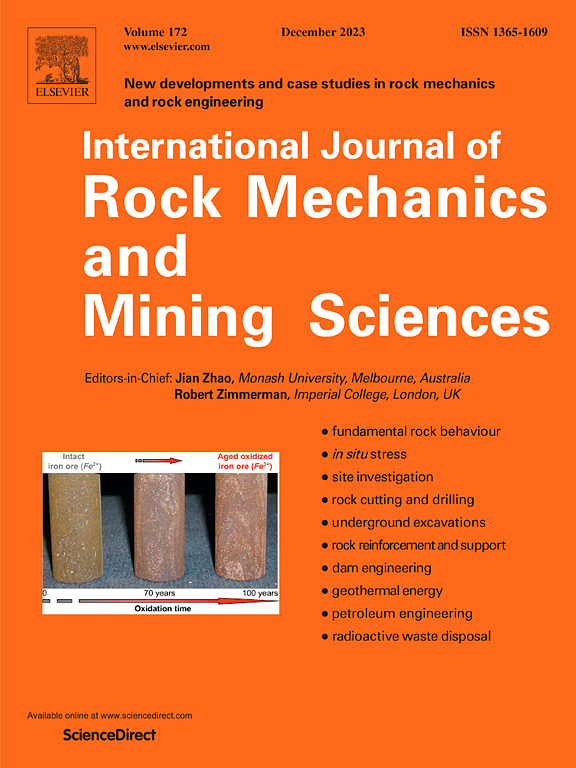全面爆破下层状岩体中深隧道损伤区的理论和数值研究
IF 7
1区 工程技术
Q1 ENGINEERING, GEOLOGICAL
International Journal of Rock Mechanics and Mining Sciences
Pub Date : 2025-02-24
DOI:10.1016/j.ijrmms.2025.106053
引用次数: 0
摘要
本文章由计算机程序翻译,如有差异,请以英文原文为准。
Theoretical and numerical investigation of damage zones in deep tunnels within a layered rock mass under full-face blasting
The spatial characteristics and mechanism of formation of a blast-induced damage zone (BIDZ) in tunnels with layered rock mass are not well understood, despite being a common excavation phenomenon. Layers affect how stress waves propagate and lead to the formation of a BIDZ. Theoretical analysis and numerical simulation were conducted to investigate the propagation of blast stress waves and the spatial distribution of the BIDZ. From a theoretical perspective, the propagation process of blasting stress waves and the damage depths in the layered rock mass were calculated. Dynamic modelling results show that the proposed blasting damage model incorporating tensile and compressive-shear coupling with equivalent boundary methods, captures the three-dimensional patterns of the BIDZ. The spatial characteristics of the maximum and minimum damage depths were at the roof and foot of the tunnel, as evinced by in-situ tests. Furthermore, this study offers critical insights for predicting damage and vibration effects by comparing with four widely used models. The maximum damage depth is affected by the thickness and dip angle of the layer, as well as the in-situ stress. Both the spatial extent and radial depth of the BIDZ exhibit a positive correlation with the thickness of the layers. The dip angle of rock layer affects the location of the maximum depth of damage in the tunnel section. The findings highlight how important it is to account for the BIDZ when assessing the safety and stability of a tunnel within a layered rock mass, as well as optimizing any support design.
求助全文
通过发布文献求助,成功后即可免费获取论文全文。
去求助
来源期刊
CiteScore
14.00
自引率
5.60%
发文量
196
审稿时长
18 weeks
期刊介绍:
The International Journal of Rock Mechanics and Mining Sciences focuses on original research, new developments, site measurements, and case studies within the fields of rock mechanics and rock engineering. Serving as an international platform, it showcases high-quality papers addressing rock mechanics and the application of its principles and techniques in mining and civil engineering projects situated on or within rock masses. These projects encompass a wide range, including slopes, open-pit mines, quarries, shafts, tunnels, caverns, underground mines, metro systems, dams, hydro-electric stations, geothermal energy, petroleum engineering, and radioactive waste disposal. The journal welcomes submissions on various topics, with particular interest in theoretical advancements, analytical and numerical methods, rock testing, site investigation, and case studies.

 求助内容:
求助内容: 应助结果提醒方式:
应助结果提醒方式:


